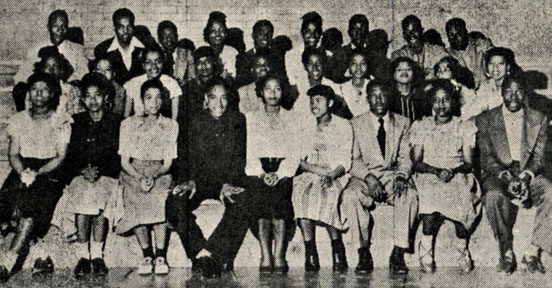| |

Home
|
|
|
|
|
|
|
|
|
|
|
|
|
|
|
|
|
Curricular Experimentation
“The task of the Secondary School Study was to find means by which the curricular offerings of black high schools could be influenced by accepted educational practices that had enriched other school curricula but which were practically unknown in most black schools.” W. H. Brown & W. A. Robinson, Serving Negro Schools: A Report on the Secondary School Study (1946) |
|
|
|
“I was struck by the quality of work that was occurring at I. M. Terrell even before I arrived in Ft. Worth. I was at Dillard University in the Admissions Office and noticed the unique array of courses that were on the transcripts from I. M. Terrell students who were applying to Dillard. There were courses in debating, journalism, drama; this was startling. Almost any student from I. M. Terrell who applied to Dillard was admitted.” Adelene L. James
|
|
|
|
|
|
|
|
|
“After graduation when we attended college and said that we were from I. M. Terrell, we did not have to take the opening placement exam. We were well prepared and ready to begin our college studies.” Marjorie Hollins Crenshaw |
|
|
|
|
|
|
|
|
|
|
|
|
|
|
In 1942, Terrell High School staff identified the following goals for its work in the Secondary School Study:
1) To make guidance more effective.
2) To increase pupil and teacher participation in administration and all curricula and extra-curricula activities through staff meetings and the school council.
3) To encourage “in-service growth” of teachers through study in group meetings and by visitation.
4) To make use of the course in Personal and Social Problems as the ‘core’ of our program.
from To and From Our Schools: A Newsbulletin of the Secondary School Study
The following excerpt from a Secondary School Study educator’s report displays Terrell High School’s efforts to engage students in the formation of a democratic community and to increase pupil and teacher participation through a school council:
“The young, though wide-awake, council of Terrell High is characterized by a simple organization plan. The council makes recommendations to the entire school as a result of study of certain school problems submitted to the council by the school. The council is composed of several committees which make reports through the council on the problems explored.
“The council is beginning to see possibilities of serving the school by planning for school entertainment, safety, community chest, red cross and other community efforts, lost and found, assemblies, etc. It is interested in finding ways to make or revise school policy in certain areas which concern the whole school. Together we discussed possible revisions of meeting time, various types of work meetings and reporting meetings and various means which might be employed in order to get reliable information to the home rooms. The council was very much concerned about audience behavior in the assembly and considered several approaches to this problem.” from To and From Our Schools, Vol. 1, No. 2
|
|
|
|
|
|
|
|
|
|
|
|
|
|
|
|
|
|
|
|
|
|
|
|
|
|
|
|
|
|
|
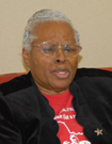 Opal Lee
Opal Lee |
|
“The teachers were concerned about the whole child—that included health care and our emotional well being. They were another set of parents. If they found out that we had done something improper, they were involved. The teachers knew us well enough to know what direction we were going and when they should become involved.” Opal Lee
|
|
|
|
|
|
|
|
|
|
|
|
|
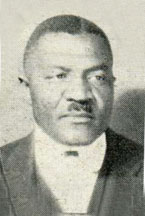 W. F. Bledsoe,
W. F. Bledsoe,
civics, history, math |
|
|
|
|
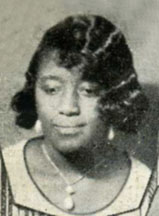 L. D. Phillips,
L. D. Phillips,
English |
|
|
|
|
|
|
|
|
“In-service growth” and the Professional Development of Teachers
Many of the Terrell High School staff attended Secondary School Study workshops. William F. Bledsoe, Lorenzo M. Johnson, and LaBerta D. Phillips attended the 1942 Durham Workshop, and LaBerta Phillips attended the 1943 Virginia State College Workshop to study audio-visual aids to teaching. Hazel Harvey Peace attended the 1942 Institute on Personality Development at Vassar College where she studied guidance with Caroline Zachry of the Progressive Education Association’s Eight Year Study staff. Juanita F. Bates, a Terrell biology teacher, attended the 1943 Natural Science Project workshop at Teachers College. S. W. Prince attended the 1943 Fisk Conference on Teaching the Social Studies, directed by Hilda Taba of the Progressive Education Association’s Eight Year Study staff.
|
|
|
|
|
|
|
|
|
|
|
|
|
|
|
|
|
|
|
|
|
|
|
|
|
|
|
|
|
|
|
|
|
Core Curriculum
“In the English classes, students were coming into the library to learn about Ben Jonson while they were studying Shakespeare; students were always involved in supplemental research to accompany their class studies, and the library was an integral part of the school offerings.”
Adelene L. James
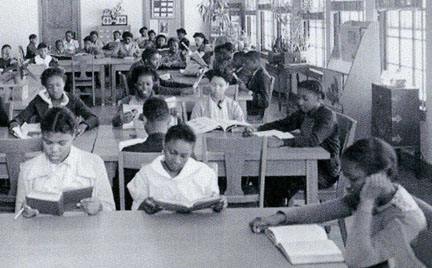
“Mrs. Phillips and Mrs. Peace were doing a fine job of attacking personal and social problems with two groups of children. The technique involved the use of English and social studies material in exploring the personal and social concerns of these children. These two teachers seemed exceptionally sensitive to the problems of children and had established rapport which encouraged the pupils to discuss their problems frankly.” from To and From Our Schools, Vol. 1, No. 2
One dimension of curricular planning that permeated the Secondary School Study was the effort to correlate the traditional subjects into a core curriculum, i.e., to draw out connections among the individual subjects as they were taught in their respective classes. The content was decided through a combination of pupil-teacher planning and teachers’ analysis of students’ needs and interests. While the “project method,” a common progressive education instructional practice of the time, was employed in many classrooms, the curriculum still remained focused upon academic knowledge. LaBerta Phillips’ and Hazel Harvey Peace’s efforts to address “personal and social concerns” exemplified this type of experimentation.
As Adelene L. James noted during her interview, “The groups of students from Mrs. Peace’s classes in collaboration with Mrs. Phillip’s classes offered subject material suitable and pertinent for the school magazine, Terrell Life. These students were enrolled in both English and Journalism and often researched and developed the material for the entire issue of the school journal.”
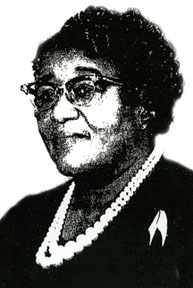
LaBerta Phillips
In addition to this work, LaBerta Phillips, a teacher who was noted in Secondary School Study reports, seemed to develop her journalism classes into a form of core curriculum where academic subjects were integrated and guided by student interests and societal needs.
|
|
|
|
|
|
|
|
|
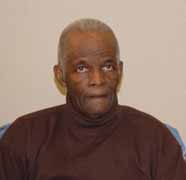 Joseph Webb
Joseph Webb |
“I. M. Terrell teachers were so resourceful and would use many different techniques to engage students. One teacher, LaBerta Phillips, used plays and acting as a way to involve us in classroom activities. The teachers were quite creative.” Joseph Webb
|
|
|
|
|
|
|
|
|
“The curriculum was quite expansive. In the journalism classes, the students were reading and learning about newspapers in other cities. The library was a rich resource; we received subscriptions to other papers from outside the state. Journalism was a very important aspect of the curriculum and brought the library into the center of the academic program.”
Adelene L. James
|
|
|
|
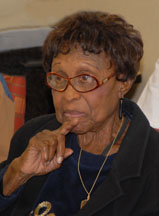 Adelene L. James
Adelene L. James |
|
|
|
|
|
|
|
|
|
|
|
|
|
|
|
|
|
|
|
|
|
|
|
|
|
|
|
|
|
|
|
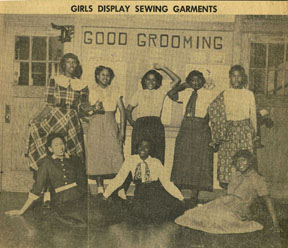
The historical mission of black education at the secondary school level is often described as the tension between a college preparatory course of study and a more occupational-vocational curriculum, a false dichotomy established by the emblematic beliefs of W. E. B. Du Bois and Booker T. Washington. Participating Secondary School Study sites often configured their curricula to bring together all students and to permit the core courses to serve as an occasion to define community. Further, traditional "vocational topics" such as homemaking were expanded to address general education topics of health and social action (in the classic progressive education tradition of the 1930s with projects focused on community welfare). Specialized courses allowed students to pursue specific academic and vocational interests, yet the core courses brought all the students together in homogenous groupings.
“There was no tracking at I. M. Terrell. Everyone took an academically-oriented curriculum.” Robert L. O’Neal
|
|
|
|
|
|
|
|
|
|
|
|
|
|
|
|
|
|
|
|
|
|
|
|
|
|
|
|
|
|
Pupil-Teacher Planning
“Mrs. Bates and her biology classes were experimenting with pupil-teacher planning in an interesting way. Together we considered the possibility of developing a course around definite aspects of pupil growth using any subject matter which seemed interesting and useful for bringing about this growth.” from To and From Our Schools, Vol. 1, No. 2
With assistance from Progressive Education Association staff, the participants in the Secondary School Study ultimately came to reconsider the basic purposes of secondary education and sought ways to discover the needs of black high school students in relation to their social setting in America and to explore the implications of establishing educational communities based upon democratic living. One curricular-instructional methodology that was incorporated into this experimental venture was pupil-teacher planning, a widespread practice of teachers who were attempting to embody general principles of progressive education and democracy in the classroom. While pupil-teacher planning ultimately resulted in the development of curricular activities, its origins arose more as a way to reconcile the balance between student needs and interests as the sources for selecting curricular experiences. Defining democracy in the classroom as a setting where experiences would be determined by both the (shared) interests of the students along with the perceived (real) personal/social needs of the individual, pupil-teacher planning served as a way to develop a classroom atmosphere where youth could building meaningful relationships with adults (the teachers).
One apocryphal anecdote of pupil-teacher planning is told by William Van Til in his autobiography, My Way of Looking at It, who described a talk given by H. H. Giles on the method. A critical question was posed by a member of the audience who doubted the wisdom of involving students in planning and distrusted their ability to make important educational decisions. When Giles was asked which was more important in pupil-teacher planning—the teacher or the pupil—Giles reply was “the hyphen.” Just as core curriculum represented much more than the act of merging content, pupil-teacher planning as a form of instructional discourse went far beyond a series of teacher and pupil choices. The hyphen represented a working conception of cooperation and democracy in the classroom.
|
|
|
|
|
|
|
|
|
|
|
|
|
|
|
|
|
|
|
|
|
|
|
|
|
|
|
|
|
|
|
|
|
|
The Important Role of Music at I. M. Terrell High School
While the music program at I. M. Terrell High School was not a specific focus of Secondary School Study experimentation, many alumni mentioned the significant work of their beloved music teacher, Adlee H. Trezevant. The role of music does represent a fundamental idea of progressive education at the secondary school level—the significant and integrating aspect of the arts as academic content. As noted, music was not “an extracurricular aside” to the main subjects. Trezevant’s classes were a unified part of the core program.
|
|
|
|
|
|
|
|
|
|
|
|
|
|
|
|
|
|
|
|
|
|
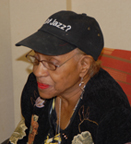 Marjorie Hollins Crenshaw
Marjorie Hollins Crenshaw |
|
|
|
|
|
|
|
|
|
|
“Mrs. Trezevant was the all-comprehensive music teacher, she taught music theory, music history, music appreciation, directed the drum and bugle corps, and served as band director and choral director. She developed one of the strongest music programs in the area.” Marjorie Hollins Crenshaw
|
|
|
|
|
|
|
|
|
|
|
|
|
|
|
|
|
|
|
|
|
|
|
|
|
|
|
|
|
|
|
|
|
|
|
|
|
|
|
|
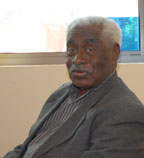
Jerome L. Thomas
|
|
|
|
|
|
|
|
“Mrs. Adlee H. Trezevant, a dynamic inspirational person, was the music teacher, and her program was a centerpiece for the entire school. Music was not an appendage to the curriculum; it was a focal point.”
Jerome L. Thomas
|
|
|
|
|
|
| |
|
|
|
|
|
|
|
|
|
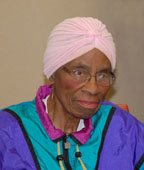 Loyce S. Whitted
Loyce S. Whitted |
|
|
|
|
|
|
| |
|
|
|
|
|
|
|
|
|
|
“Mrs. Trezevant’s significance stays with us today as many Terrell graduates participate in the Adlee H. Trezevant Memorial Choir that continues to hold important programs today.”
Loyce S. Whitted
|
| |
|
|
|
|
|
|
|
|
|
|
|
|
|
|
|
|
|
|
|
|
| |
|
|
|
|
|
|
|
|
|
|
|
|
|
|
|
|
|
|
|
|
|
|
|
|
|
|
|
|
|
|
|
|
|
|
|
|
|
|
|
|
|
|
|

an institutional member of the International Coalition of Sites of Conscience
curator@museumofeducation.info
|
|


